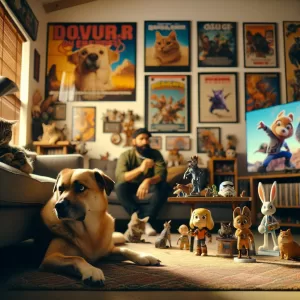Zoos, for many of us, were our first exposure to the dizzying diversity of the animal kingdom. They offered a safe haven to experience the majesty of a tiger, the playfulness of monkeys, or the gentle elegance of a giraffe. But as we’ve grown older, so too have our perceptions and understanding of these complex institutions. This exploration seeks to navigate the paradoxical world of zoos – sanctuaries of conservation and subjects of critique – in the hopes of fostering a balanced perspective on their role in animal conservation.
Chapter 4: Zoos Through a Critical Lens: A Discourse on Ethical Concerns and Criticisms
The Zoo Paradox
Zoos, despite their transformative role in conservation and education, are steeped in a constant debate about ethics and welfare. On the surface, they might seem like idyllic havens for animals. However, beneath this façade, they raise important questions about the welfare of captive animals and the moral implications of their existence. This discourse invites us to critically assess zoos, exploring the key ethical concerns and criticisms associated with them.
The Habitat Question: Can Zoos Truly Replicate the Wild?
One of the central arguments against zoos is that they cannot wholly replicate an animal’s natural habitat. Even the most well-designed enclosure falls short of the freedom and diversity offered by the wild. Limited space, artificial settings, and lack of social structures can impose significant restrictions on the animals, impairing their ability to express natural behaviors. Critics argue that this deprivation can lead to diminished physical health and psychological well-being, raising serious welfare concerns.
The Mental Health Quandary: Deciphering Stereotypic Behaviors
Observations of stereotypic behaviors in zoo animals, such as pacing, self-harm, and over-grooming, have amplified the ethical debate around zoos. These behaviors, often indicative of stress and poor mental health, are seldom observed in the wild. It’s argued that these unnatural behaviors result from inadequate environments, lack of mental stimulation, and the inability to engage in natural behaviors, highlighting the need for improved welfare standards.
The Cage Paradox: The Ethics of Display
Another potent criticism revolves around the ethics of confining animals for public display. Critics argue that zoos convey a message that it is acceptable to cage animals for our amusement, reinforcing a utilitarian view of wildlife. They assert that while educational encounters with animals can foster empathy, they can also normalize the practice of keeping animals in captivity, generating a complex moral paradox.
In-situ vs. Ex-situ Conservation: Where Should Our Priorities Lie?
While zoos play a significant role in ex-situ conservation efforts (conservation outside an animal’s natural habitat), critics argue for a stronger emphasis on in-situ conservation (conservation within the natural habitat). They propose that resources should be directed towards protecting natural ecosystems, which would benefit a broader range of species and maintain ecological integrity. Critics argue that while reintroductions from zoos have their success stories, they are often resource-intensive and may not address the root causes of a species’ decline, such as habitat loss or human conflict.
A Call for a Constructive Debate
The ethical debate surrounding zoos is complex and layered. Despite their conservation and educational roles, the welfare concerns and moral implications of confining animals for display cannot be overlooked. It’s crucial to engage with these criticisms, not as a dismissal of zoos, but as a call for continuous improvement. This dialogue compels us to explore new models of zoo design, implement higher standards of animal welfare, and balance ex-situ and in-situ conservation efforts. It is through this rigorous scrutiny that we can envision a future where zoos no longer merely house animals, but respect their autonomy, well-being, and natural way of life.








